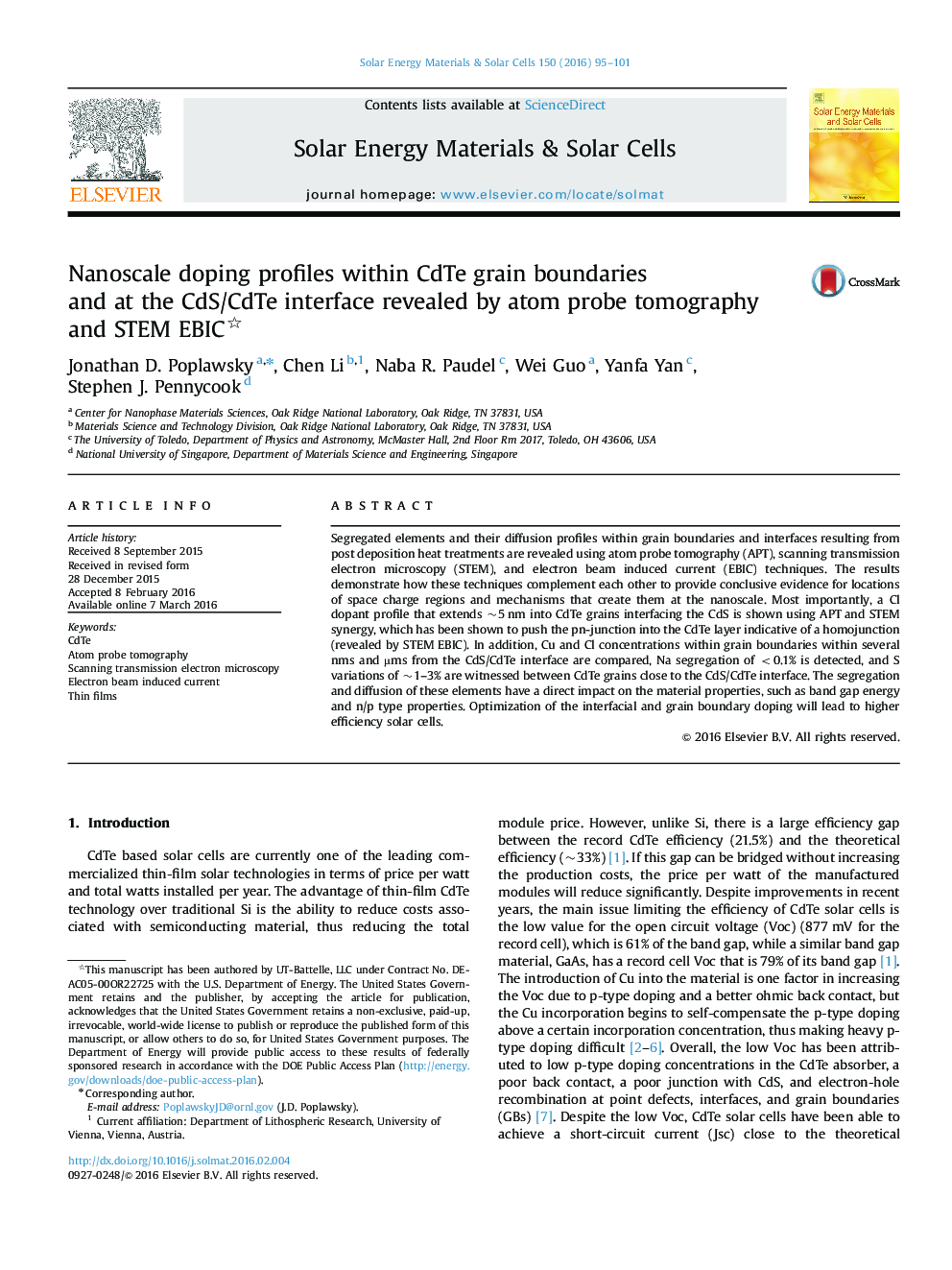| Article ID | Journal | Published Year | Pages | File Type |
|---|---|---|---|---|
| 77550 | Solar Energy Materials and Solar Cells | 2016 | 7 Pages |
•STEM EBIC measures a CdTe homojunction a few nms from the CdS/CdTe interface.•APT reveals CdS/CdTe interfacial Cl dopant profiles.•Dopant segregation is compared between front and back contact grain boundaries.•Less than 1 at% Na is detected in GBs and interfaces using APT techniques.•S diffusion dynamics between the CdS/CdTe interface are imaged with sub nm resolution.
Segregated elements and their diffusion profiles within grain boundaries and interfaces resulting from post deposition heat treatments are revealed using atom probe tomography (APT), scanning transmission electron microscopy (STEM), and electron beam induced current (EBIC) techniques. The results demonstrate how these techniques complement each other to provide conclusive evidence for locations of space charge regions and mechanisms that create them at the nanoscale. Most importantly, a Cl dopant profile that extends ~5 nm into CdTe grains interfacing the CdS is shown using APT and STEM synergy, which has been shown to push the pn-junction into the CdTe layer indicative of a homojunction (revealed by STEM EBIC). In addition, Cu and Cl concentrations within grain boundaries within several nms and µms from the CdS/CdTe interface are compared, Na segregation of <0.1% is detected, and S variations of ~1–3% are witnessed between CdTe grains close to the CdS/CdTe interface. The segregation and diffusion of these elements have a direct impact on the material properties, such as band gap energy and n/p type properties. Optimization of the interfacial and grain boundary doping will lead to higher efficiency solar cells.
